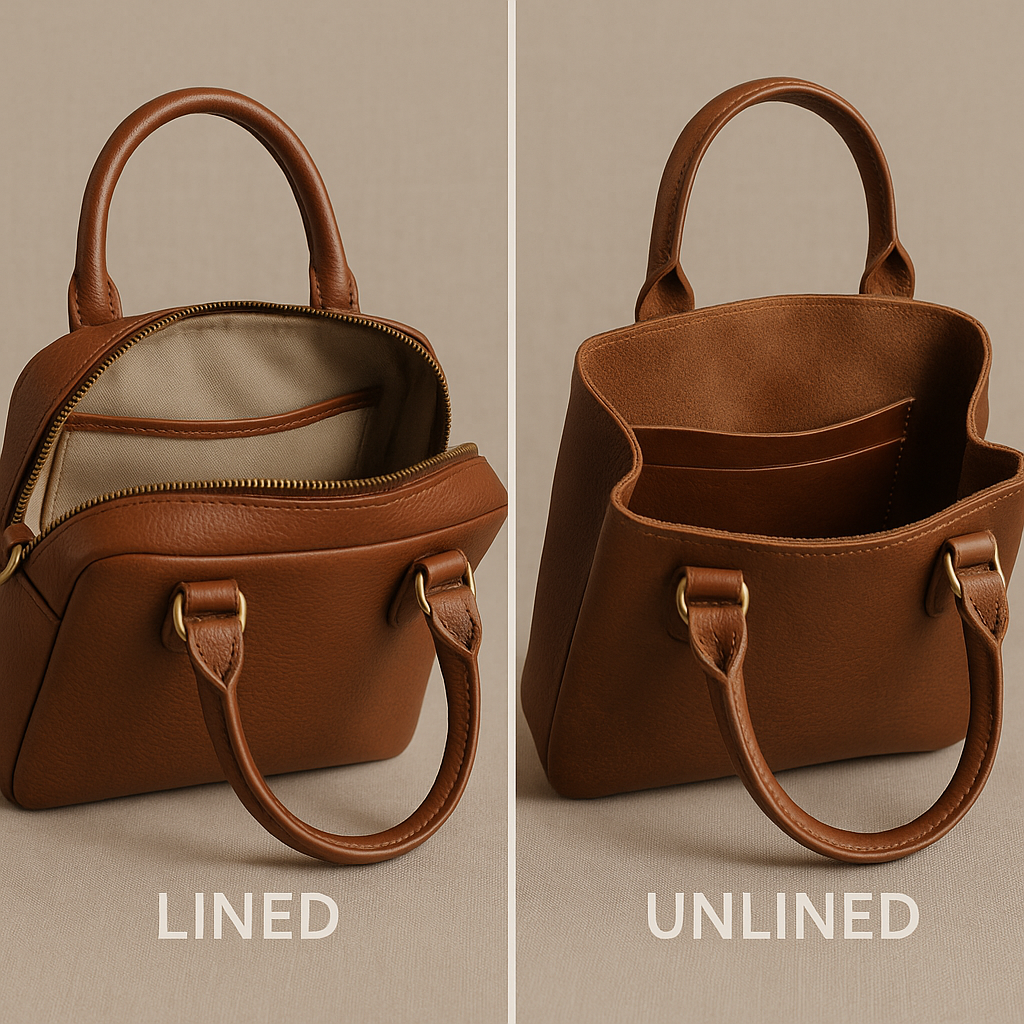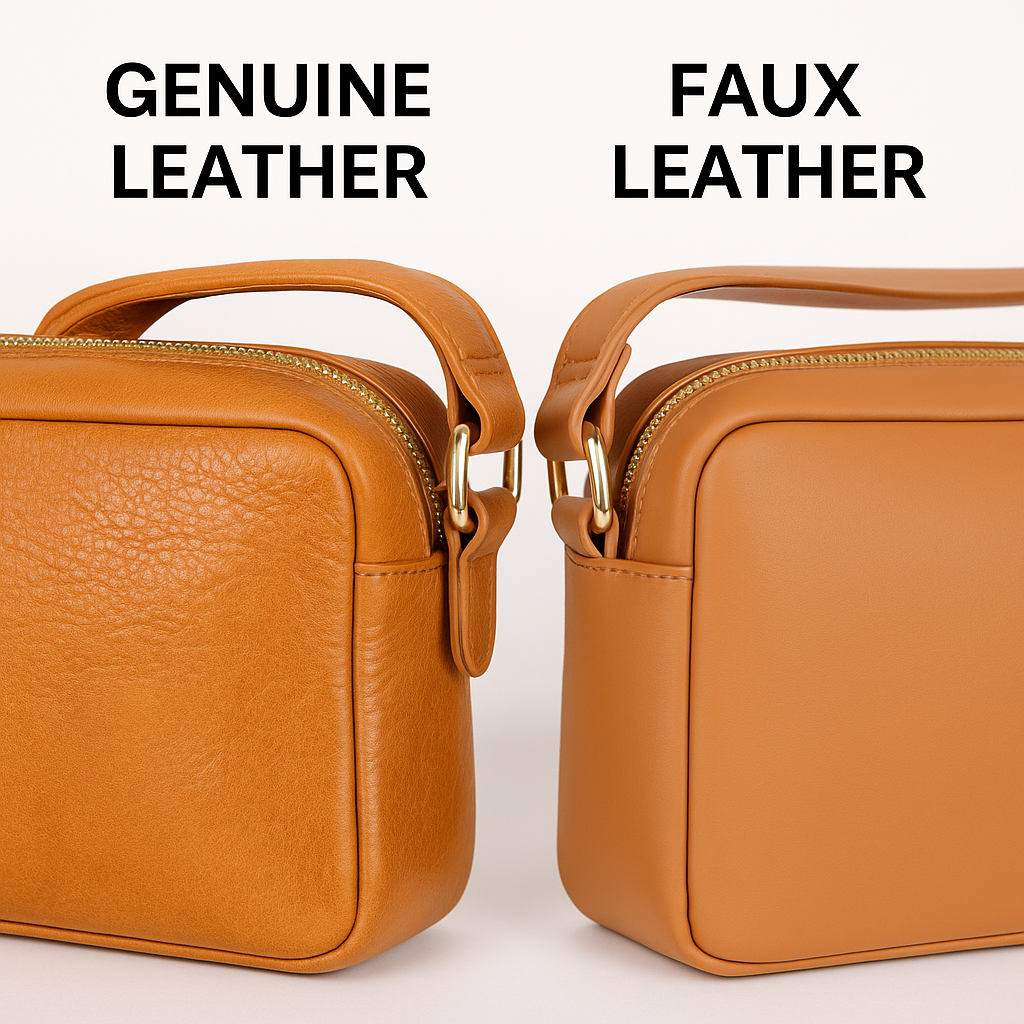
Lining or No Lining? The Truth About Leather Bags
When shopping for a leather bag—whether it's a tote, satchel, backpack, or crossbody—you're likely focused on the exterior: the leather type, the color, the craftsmanship. But what about the inside? Specifically, should your leather bag be lined or unlined? This small design detail can have a big impact on the bag’s durability, structure, and daily usability.
In this blog, we’ll explore the pros and cons of lined vs. unlined leather bags, common complaints about unlined interiors, and why we (almost always) recommend going lined.
Lined Leather Bags: Why They’re Worth It
A lined leather bag has a layer of fabric or suede stitched into the interior. It’s not just for show—lining offers real advantages:
✅ Added Durability
Lining protects the interior leather from wear and tear caused by keys, pens, and other sharp or oily items. It essentially acts as a buffer, preserving the life of the bag.
✅ Improved Structure
Lining helps maintain the shape of the bag over time, especially in softer leathers that may slouch or stretch with heavy use.
✅ Better Organization
Lined bags often include built-in pockets, zip compartments, and dividers, which are sewn into the fabric. These features are much harder to add to unlined bags.
✅ Cleaner Aesthetic Inside
No visible seams, glue marks, or leather suede fibers—just a smooth, polished look and feel.
Unlined Leather Bags: Minimalist or Messy?
Unlined bags skip the inner layer, leaving the raw underside of the leather exposed. While this can be a deliberate design choice, it comes with several trade-offs.
🚫 Common Complaints About Unlined Bags:
-
Fibers shed: The unfinished leather interior can leave dust or tiny suede flakes on your belongings.
-
Harder to clean: Raw leather stains easily and can absorb moisture or ink permanently.
-
No structure: Unlined bags often collapse or sag unless the leather is extremely thick.
-
Less refined appearance: Exposed seams and unfinished edges can feel more rustic than luxurious.
What Is Leather Bag Lining Made Of?
Bag linings are typically made from one of the following materials:
-
Cotton Canvas: Durable, breathable, and easy to clean.
-
Polyester or Nylon: Lightweight, water-resistant, and commonly used in all types of bags.
-
Suede or Microfiber: looks luxurious in starting but after using it for a while, it is difficult to clean and makes bag heavy due to higher weight of fabric used.
-
Leather or Bonded Leather: Used for structured, luxury interiors (though it adds weight and cost).
How to Clean the Fabric Lining of a Leather Bag
Lined bags are much easier to clean than unlined ones—here’s how:
-
Turn the lining inside out, if possible.
-
Vacuum or shake out crumbs and debris.
-
Spot clean with mild soap and warm water using a soft cloth.
-
For deeper cleaning, use a fabric-safe stain remover—but test it on a hidden area first.
-
Let it air dry completely before use.
Note: Never soak the interior or get the leather exterior wet.
Why We Always Recommend Lined Leather Bags
At Minori Leather, we believe in building bags that last—and that means they need to be just as strong on the inside as they are on the outside. Lining adds functionality, protects your investment, and elevates the overall quality and experience of the bag.
Whether you're using a leather crossbody for errands or a weekender duffle for travel, lining offers peace of mind and daily convenience. It’s a feature that adds real value—and once you’ve tried a thoughtfully lined leather bag, it’s hard to go back.
Conclusion: Lined Leather Bags Win Every Time
While unlined leather bags have their appeal in minimalist circles, most users find them messy, impractical, and hard to maintain long-term. If you're investing in a leather bag for everyday use, business, or travel, a lined interior is the smarter, more durable choice.
Your belongings deserve protection. Your bag deserves structure. And you deserve a leather piece that works beautifully, inside and out.



